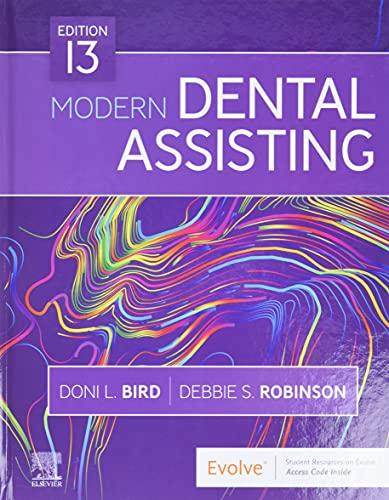Question
The Framework defines a Class called similarity. You must use the class as-is with no changes. The class includes a class initialization method which takes
The Framework defines a Class called similarity. You must use the class as-is with no changes. The class includes a class initialization method which takes two rating dictionaries ratingP and ratingQ as parameters. The class has two methods: minkowski which takes a single parameter r, and returns the Minkowki Distance between the two dictionaries (that the Class object is instantiated with). pearson which takes no parameters, and returns the Pearson Correlation between the two dictionaries (that the Class object is instantiated with). Given a userX, write code to find the NN (k=1) recommendations for userX based on the Euclidean Similarity measure. Pseudo-code has been provided to you in the framework. So, you essentially need to plug in appropriate code for steps 1 through 5 in the framework.
print ()
import math
from operator import itemgetter
# define class similarity
class similarity:
# Class instantiation
def __init__ (self, ratingP, ratingQ):
self.ratings1 = ratingP
self.ratings2 = ratingQ
# Minkowski Distance between two vectors
def minkowksi(self, r):
# calculate minkowski distance
distance = 0
for k in (set(self.ratings1.keys()) & set(self.ratings2.keys())):
p = self.ratings1[k]
q = self.ratings2[k]
distance += pow(abs(p - q), r)
# return value of minkowski distance
return pow(distance,1/r)
# Pearson Correlation between two vectors
def pearson(self):
sumpq = 0
sump = 0
sumq = 0
sump2 = 0
sumq2 = 0
n = 0
# calculate pearson correlation using the computationally efficient form
for k in (set(self.ratings1.keys()) & set(self.ratings2.keys())):
n += 1
p = self.ratings1[k]
q = self.ratings2[k]
sumpq += p * q
sump += p
sumq += q
sump2 += pow(p, 2)
sumq2 += pow(q, 2)
# error check for n==0 condition
if n == 0:
print (">>> pearson debug: n=0; returning -2 correlation!")
return -2
# calculate nr and dr for pearson correlation
nr = (sumpq - (sump * sumq) / n)
dr = (math.sqrt(sump2 - pow(sump, 2) / n) *
math.sqrt(sumq2 - pow(sumq, 2) / n))
# error check for dr==0 condition
if dr == 0:
print (">>> pearson debug: denominator=0; returning -2 correlation!")
return -2
# return value of pearson correlation coefficient
return nr / dr
# user ratings
songData3 = {"Angelica": {"Blues Traveler": 3.5, "Broken Bells": 2.0, "Norah Jones": 4.5, "Phoenix": 5.0, "Slightly Stoopid": 1.5, "The Strokes": 2.5, "Vampire Weekend": 2.0},
"Bill":{"Blues Traveler": 2.0, "Broken Bells": 3.5, "Deadmau5": 4.0, "Phoenix": 2.0, "Slightly Stoopid": 3.5, "Vampire Weekend": 3.0},
"Chan": {"Blues Traveler": 5.0, "Broken Bells": 1.0, "Deadmau5": 1.0, "Norah Jones": 3.0, "Phoenix": 5, "Slightly Stoopid": 1.0},
"Dan": {"Blues Traveler": 3.0, "Broken Bells": 4.0, "Deadmau5": 4.5, "Phoenix": 3.0, "Slightly Stoopid": 4.5, "The Strokes": 4.0, "Vampire Weekend": 2.0},
"Hailey": {"Broken Bells": 4.0, "Deadmau5": 1.0, "Norah Jones": 4.0, "The Strokes": 4.0, "Vampire Weekend": 1.0},
"Jordyn":{"Broken Bells": 4.5, "Deadmau5": 4.0, "Norah Jones": 5.0, "Phoenix": 5.0, "Slightly Stoopid": 4.5, "The Strokes": 4.0, "Vampire Weekend": 4.0},
"Sam": {"Blues Traveler": 5.0, "Broken Bells": 2.0, "Norah Jones": 3.0, "Phoenix": 5.0, "Slightly Stoopid": 4.0, "The Strokes": 5.0},
"Veronica": {"Blues Traveler": 3.0, "Norah Jones": 5.0, "Phoenix": 4.0, "Slightly Stoopid": 2.5, "The Strokes": 3.0}
}
# for whom are we making recommendations?
userX = "Hailey"
userXRatings = songData3[userX]
# find the euclidean distance between userX's ratings, and each of the other user's ratings.
# use a for loop to get at the other users and their ratings - DO NOT hard code.
# use the similarity class to caclulate the euclidean distance between user ratings.
# assign list of (user, distance) tuples to variable userDistances.
# Example: [('Jordyn', 4.39), ('Chan', 3.16), ('Veronica', 1.41), ('Bill', 3.64)]
userDistances = []
# sort list of tuples by lowest distance to highest distance.
# assign sorted list to variable userSortedDistances.
# Example: [('Veronica', 1.41), ('Sam', 2.45), ('Angelica', 2.74)]
userSortedDistances = []
userSortedDistances =sorted(userDistances, key=itemegetter(1),reverse=False)
# userX's NN is the user at the 0th position of the sorted list.
# assign NN to userXNN.
# Example: 'Veronica'
userXNN = ""
userXNN=userSortedDistances[0][0]
# recos for userX will include albums rated by userXNN, not already rated by userX.
# assign list of (album, rating) tuples to variable userXRecos.
# Example: [('Slightly Stoopid', 2.5), ('Blues Traveler', 3.0), ('Phoenix', 4.0)]
userXRecos = []
for x in songData3[userXNN]:
if x not in songData3[userX]:
userXRecos.append((x,songData3[userXNN][i]))
# sort list of tuples by highest rating to lowest rating.
# assign sorted list to varaible userXSortedRecos.
# Example: [('Phoenix', 4.0), ('Blues Traveler', 3.0), ('Slightly Stoopid', 2.5)]
userXSortedRecos = []
userXSortedRecos=sorted(userXRecos,key=itemgetter(1),reverse=False)
print ("Recommendations for", userX)
print ("--------------------------")
print ()
print (userXSortedRecos)
Step by Step Solution
There are 3 Steps involved in it
Step: 1

Get Instant Access to Expert-Tailored Solutions
See step-by-step solutions with expert insights and AI powered tools for academic success
Step: 2

Step: 3

Ace Your Homework with AI
Get the answers you need in no time with our AI-driven, step-by-step assistance
Get Started


